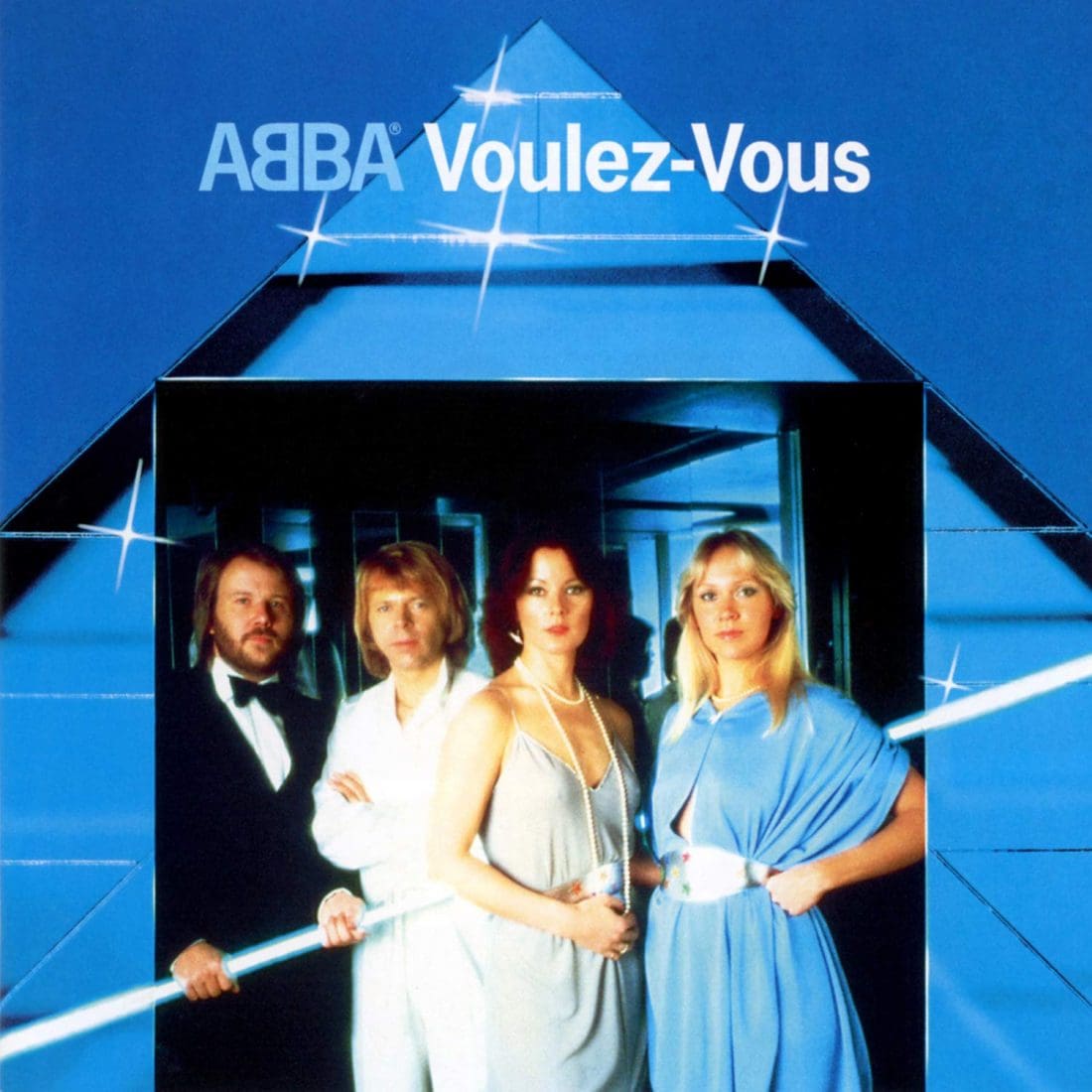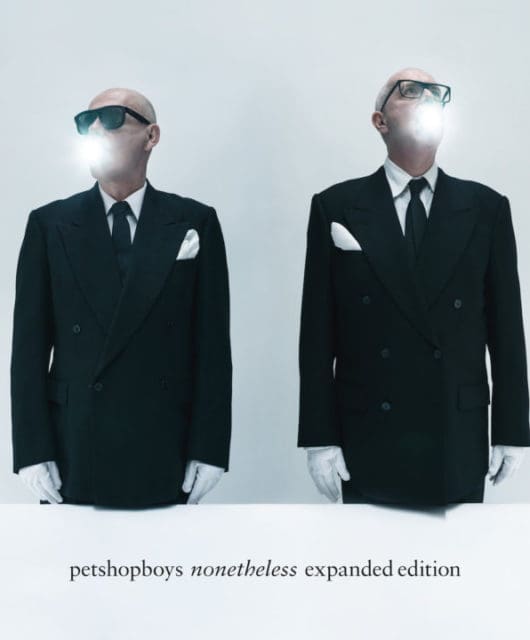Making ABBA: Voulez-Vous
By Classic Pop | September 8, 2021

Voulez-Vous showed off ABBA at their sexiest, as the quartet headed for boogie wonderland on the most disco-influenced work in their back catalogue… By Mark Lindores
With a new baby, a wedding and a divorce all happening behind the scenes and a poorly received album planting seeds of doubt in the minds of the group as to their position in the music scene, it is little wonder that Voulez-Vous, ABBA’s sixth album, was their most challenging to date.
Having sustained a prolific musical output, releasing an ABBA album every year as well as writing and producing other acts since 1973, recently completed a tour in support of ABBA: The Album and ABBA: The Movie, Benny and Björn found themselves suffering writers’ block for the first time in their career and it was decided that 1978 would be set aside for them to write a musical instead, having been inspired by their The Girl With The Golden Hair vignette, which had closed their previous album and tour.
However, the idea was put on the backburner when Summer Night City failed to set the world alight – although a hit by anyone’s standards, it wasn’t by ABBA’s. So, used to a seemingly endless string of No. 1 hits, the song’s Top Five placing in the UK was deemed below par and, knowing full well that all pop acts – however successful – had a shelf life, ABBA began to worry their time at the top was finally coming to an end.
They decided to push ahead with a new studio album instead; however, despite putting the time in in the studio, they struggled to produce anything that they considered good enough.
For the first time, working in solitude in their usual secluded cottage was stifling them and Benny and Björn decided that they needed exposure to current music trends to inspire them and took a trip to the Bahamas and Miami, where they immersed themselves in disco and funk, including the Bee Gees, Earth, Wind & Fire and Donna Summer.
The trip proved to be just creative shot in the arm they needed and there, they wrote a handful of songs that form the basis of the next ABBA album.
Their creativity sparked, they booked studio time at Miami’s Criteria Studios and recorded the backing track to Voulez-Vous, the song that went on to become the album’s title track and dictate the direction of the album.
Upon their return, and with their brand-new state-of-the-art Polar Music Studio in Stockholm at their disposal, they crafted their most cohesive album to date, utilising the latest studio technology, they completed the album within a matter of weeks and found disco the perfect fit for their trademark hook-driven pop.
At a time when everyone from The Rolling Stones to Rod Stewart were releasing disco songs, it was a no-brainer that ABBA would seamlessly slink their way into the dancefloor-dominated world, of which pioneers such as Giorgio Moroder, Cerrone and the Casablanca label roster rubbed sequinned shoulders with Eurotrashy classics such as Baccara’s Yes Sir, I Can Boogie and Tina Charles’ I Love To Love, all which are ingrained in the rich sonic tapestry of Voulez-Vous.
Kicking off with a dramatic string arrangement, As Good As New resolves into an energetic number which dictates the pace of the record and is driven by a pulsating dance beat, over which ABBA’s unmistakable harmonies flourish.
Likewise, with the title track, the only ABBA song recorded outside Sweden, Voulez-Vous marks quite a departure for ABBA, with its risqué lyric, which hints at Labelle’s infamous Lady Marmalade, and is definitely at odds with their usual wholesome image.
Keen not to alienate their longstanding audience, ABBA slowed the pace for a more traditional, schlager-influenced ballad with I Have A Dream, a schmaltzy ballad which scored them a Christmas hit, yet sounding out of place within the sexier, clubbier tracks which form the core of the album, particularly when a children’s choir are enlisted to sing lines such as “I Believe In Angels”. A perfectly fine ballad – but for ABBA three albums ago.
The only other downtempo moment on the album, though far superior, is Chiquitita, a perfect example of ABBA going back to their roots.
Of similar ilk to their classic Fernando, Chiquitita was written at the request of UNICEF, who approached the biggest acts of the day to donate a song each to raise proceeds to under-privileged children. Chiquitita was a huge hit and has raised millions for the charity.
Amping up the tempo once again, Angeleyes is one of ABBA’s greatest songs and one of the most underrated, due to its lack of a video and its release as a double-A Side with Voulez-Vous, therefore not giving the song its chance to shine.
Blending an irresistible 60s-inspired melody over a dance beat, the song is one of those songs that manages to be both wistful and uplifting at the same time, of which ABBA were the true masters.
Read more: Making ABBA’s Arrival
Read more: Making ABBA’s Super Trouper
Likewise with If It Wasn’t For The Nights, a mid-tempo disco shuffle which evokes Dancing Queen and possibly even surpasses it. The megahit that never was, the song was originally planned to be the first single from the album but was shelved when they were approached by UNICEF.
Showing a remarkable progression when it comes to storytelling, If It Wasn’t For The Nights deals with how hopeless one can feel at night when suffering loneliness.
“How I fear the time when shadows start to fall/ Sitting here alone and staring at the wall/ Even I could see the light/ If it wasn’t for the nights I think that I could make it.”
The lyric was deemed to have particular relevance when put into context that it was written shortly after Björn and Agnetha’s divorce. Having battled to save their marriage with counselling sessions after the birth of their second child, they were forced to admit that they had grown apart and divorced, though they assured fans that their split would not affect ABBA.
This technically wasn’t true, as it became a source of inspiration for their subsequent albums and would provide an emotional depth that would in turn result in some of their songwriting’s creative high points. If It Wasn’t For The Nights, Chiquitita and Angeleyes were only the beginning.
Keen not to make all their confessions on the dancefloor, though, tracks such as the title track, the pounding glam-rock/disco hybrid Does Your Mother Know (Björn’s only lead vocal on a single) and the blistering Kisses Of Fire proved energetic escapism from the troubles behind the scenes, particularly the latter.
Like Donna Summer’s MacArthur Park, the song begins with a stunning misleading introduction, which suggests the song is going to be a beautiful ballad before it erupts into a funky floorfiller reminiscent of the Bee Gees’ You Should Be Dancing, with one of ABBA’s most hypnotic choruses.
The songs’ authenticity was tested when, wanting to check they would fit alongside the biggest dancefloor hits of the day, Björn and Benny would visit Stockholm’s Atlantic nightclub to sneakily play the songs while they were in the process of being recorded and gauged the crowd’s reaction to them.
The only time the quality drops is on the plodding The King Has Lost His Crown and Lovers (Live A Little Longer), both of which were among the first songs to be written for the album, originating from the period when Benny and Björn were struggling for inspiration and direction, and aren’t really up to the standard of the later material.
When the Voulez-Vous album was finally released in 1979, fans were thrilled with the band’s return to form after the disappointing ABBA: The Album. With a sound that was as sexy and cool as ABBA ever got, and a sleek, fashionable look ready for a night on the town on the cover, this was positive proof that the dancing queens were at their musical peak.
The album itself fit perfectly into the musical zeitgeist and ABBA found themselves a hit in the clubs and in the charts, with no fewer than seven of the album’s 10 songs hitting the charts as singles in their own right or as Double A-Side features.
When the band ran out of songs to release, they simply returned to the studio to seemingly casually dash off and record yet another slice of dancefloor magic, in Gimme! Gimme! Gimme! (A Man After Midnight).
The only place where the album wasn’t a success was in the US, with ABBA’s hopes of a hit there scuppered by the untimely emergence of the Disco Sucks movement and the ceremonial burning of disco records in Chicago.
Tensions were also rising within the group, with Agnetha and Björn struggling to adapt to life in the group post-divorce and cracks also beginning to show in Frida and Benny’s relationship, despite their recent wedding.
Despite the chart success of the album’s singles, though, by the end of the decade, it seemed the party was over – both for ABBA and for disco.
Read more: Making Erasure’s The Circus
Read more: Top 40 ABBA songs
Check out ABBA’s official website here






